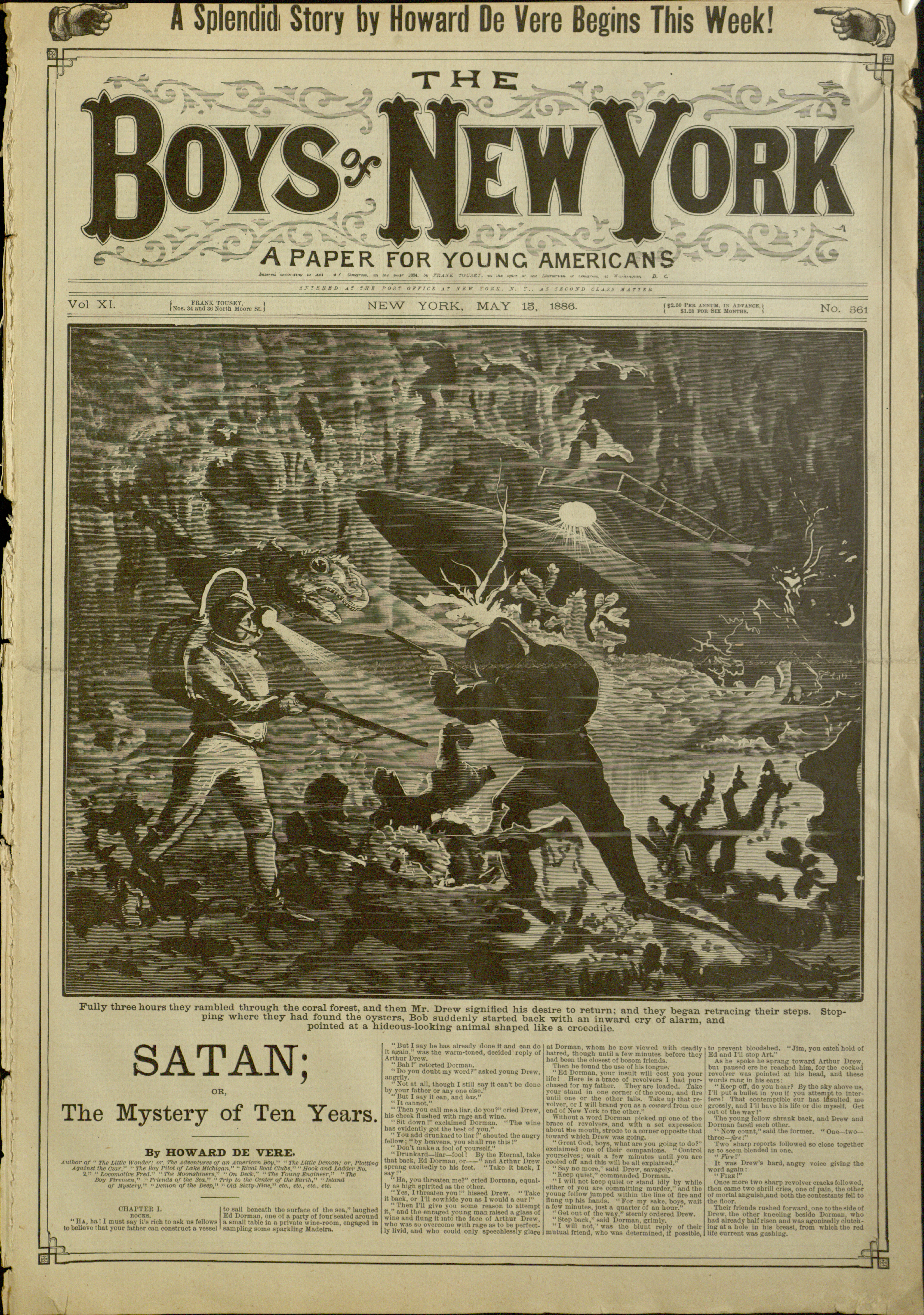|
Frank Tousey
Frank Tousey (1853–1902) was among the top five publishers of dime novels in the late 1800s and early 1900s. Based in New York, his sensationalism drew a large audience of youth hungry for scenes of daring and tormented heroes and damsels in distress. Of particular notice in his approach to the 'blood and thunder' genre were the vivid cover illustrations of his dime novels, which were consistently larger and more thrilling than previous publications. Although focused on fictional weeklies, Tousey managed a variety of materials over time, including some handbooks, gossip sheets, and even a newspaper on current events in the Spanish–American War. Early life Frank Tousey was born in Brooklyn, New York on May 24, 1853. Son of George G. Tousey (1825–1869) and Elizabeth Corks (1846–1903), Frank was one of six children, with two older brothers (John W. Tousey, 1847–1862; George C. Tousey, 1848–1898) and three younger (Edward F. Tousey, 1855–?; DeWitt Tousey, 1858–1858; Sinc ... [...More Info...] [...Related Items...] OR: [Wikipedia] [Google] [Baidu] |
Dime Novel
The dime novel is a form of late 19th-century and early 20th-century U.S. popular fiction issued in series of inexpensive paperbound editions. The term ''dime novel'' has been used as a catchall term for several different but related forms, referring to story papers, five- and ten-cent weeklies, "thick book" reprints, and sometimes early pulp magazines.The English equivalents were generally called penny dreadfuls or shilling shockers. The German and French equivalents were called "Groschenromane" and "livraisons à dix centimes", respectively. American firms also issued foreign editions of many of their works, especially as series characters came into vogue. The term was used as a title as late as 1940, in the short-lived pulp magazine ''Western Dime Novels''. In the modern age, the term ''dime novel'' has been used to refer to quickly written, lurid potboilers, usually as a pejorative to describe a sensationalized but superficial literary work. History In 1860, the publish ... [...More Info...] [...Related Items...] OR: [Wikipedia] [Google] [Baidu] |

